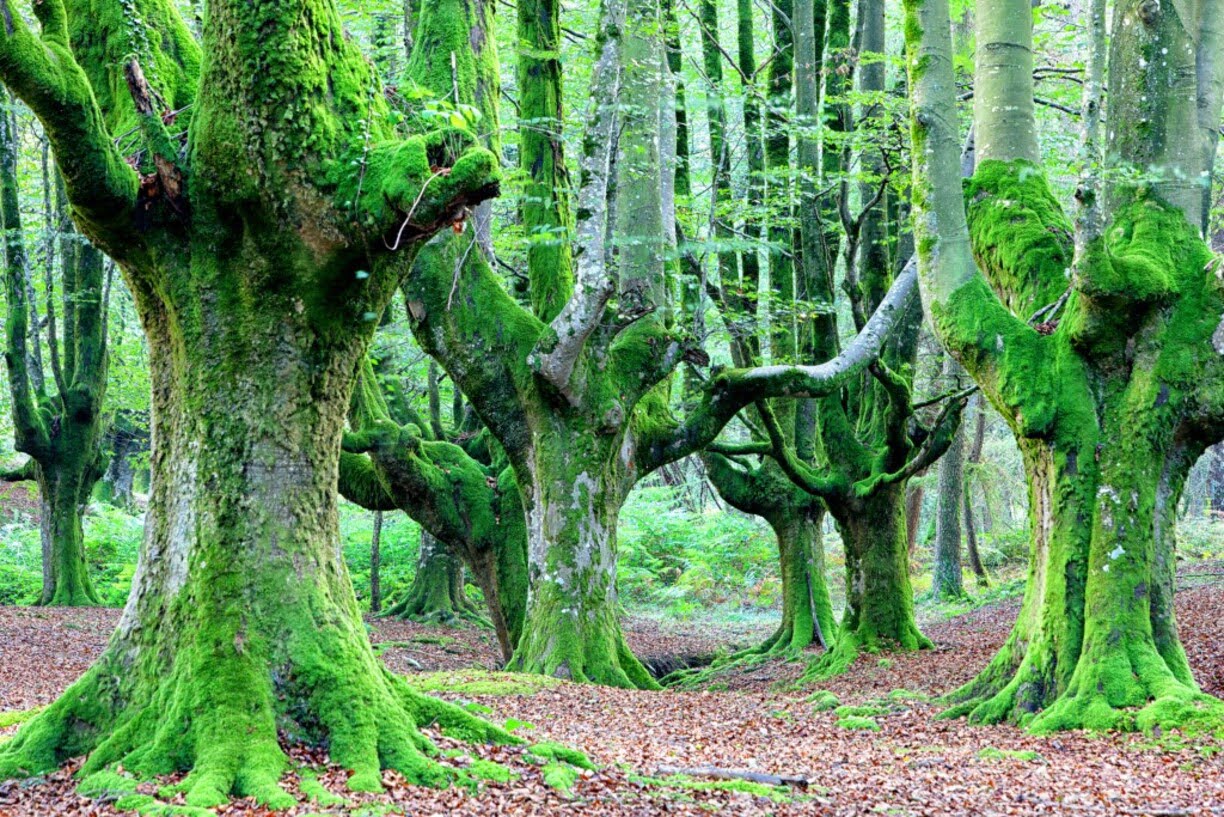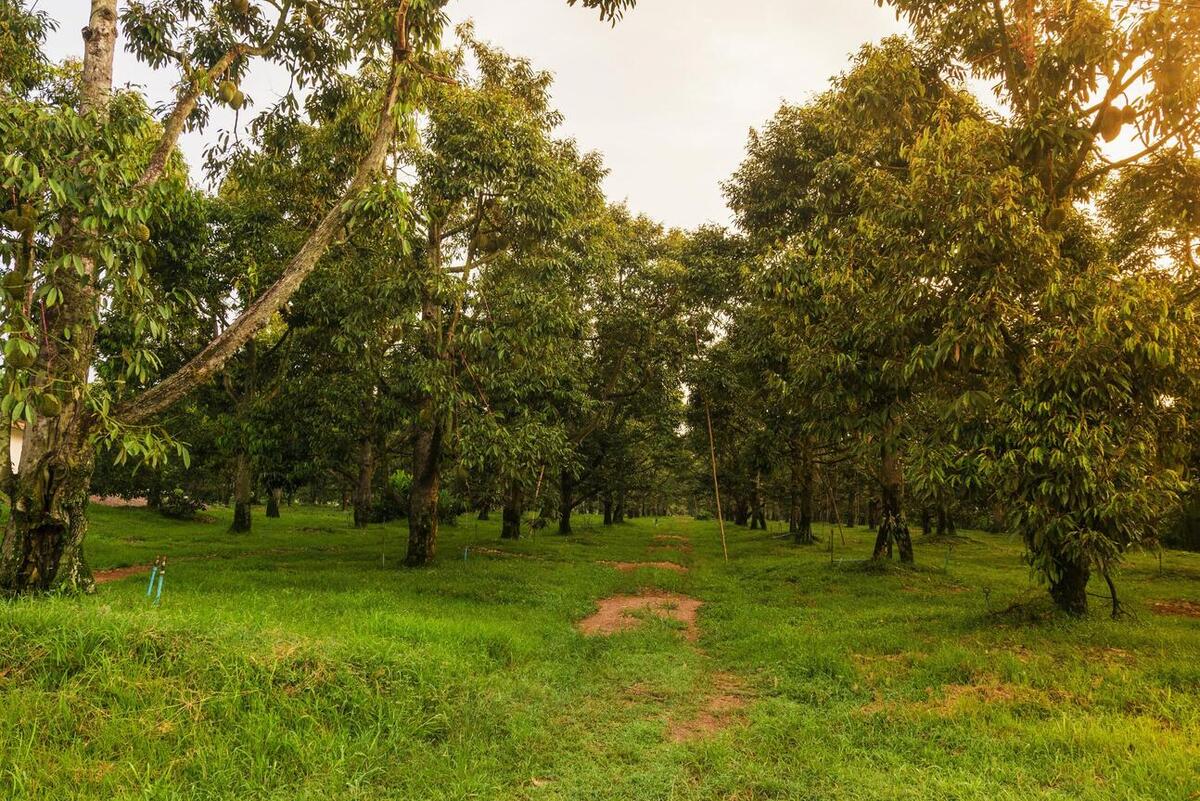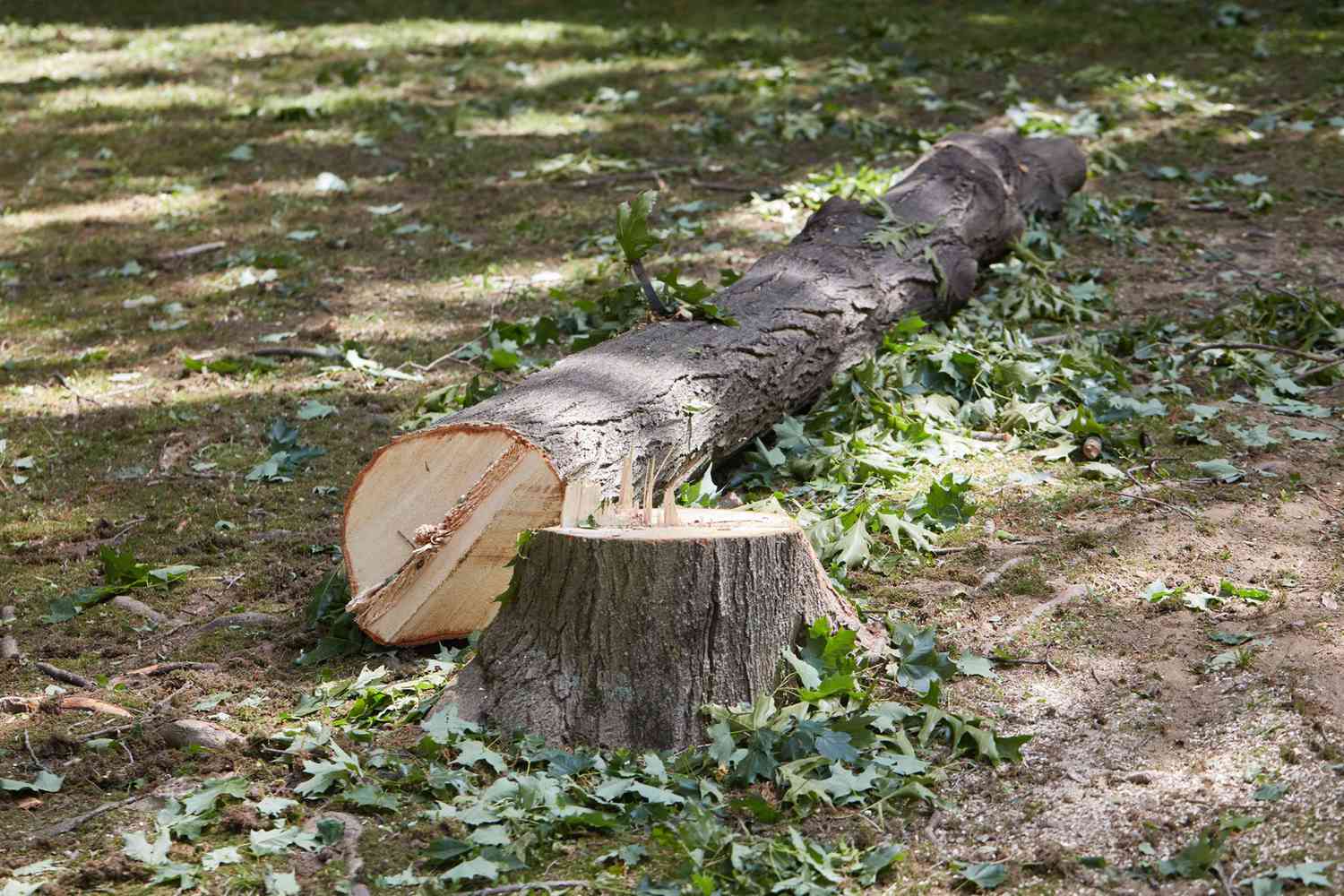Home>Gardening News and Trends>Latest News>How Many Trees On Earth


Latest News
How Many Trees On Earth
Modified: January 22, 2024
Discover the latest news on how many trees are on Earth, including fascinating facts and statistics. Stay informed and learn about the importance of preserving our planet's precious resources.
(Many of the links in this article redirect to a specific reviewed product. Your purchase of these products through affiliate links helps to generate commission for Chicagolandgardening.com, at no extra cost. Learn more)
Table of Contents
Introduction
Trees are an integral part of our planet, providing numerous benefits to both the environment and human beings. They play a vital role in combating climate change, purifying the air we breathe, and providing habitat for countless species. The sheer abundance and diversity of trees on Earth is truly remarkable, but have you ever wondered just how many trees are there?
Estimating the exact number of trees on our planet is a complex and challenging task, considering the vastness and diverse ecological landscapes. However, scientists, using advanced methodologies and data-driven models, have made significant strides in uncovering the approximate tree count.
Understanding the number of trees on Earth is essential for better comprehending the overall health of forests, tracking deforestation rates, and implementing effective conservation measures. It also allows us to appreciate the magnitude of nature’s beauty and appreciate the significant role trees play in sustaining life on our planet.
In this article, we will explore the importance of trees, delve into the methodologies used to estimate the number of trees, discuss the results of recent studies, examine the distribution of trees by region, and analyze the impact of deforestation on tree populations. We will also highlight the conservation efforts aimed at preserving these precious natural resources.
So, strap in as we venture into the world of trees, unraveling the mystery of their sheer numbers and uncovering the fascinating insights they provide about our planet’s biodiversity.
Importance of Trees
Trees are not just a beautiful part of our natural landscapes; they are essential for the survival of all living organisms on Earth. Here are some key reasons why trees are of utmost importance:
1. Environmental Benefits: Trees are a crucial component in combating climate change. They absorb carbon dioxide, a greenhouse gas responsible for global warming, and release oxygen through the process of photosynthesis. By sequestering carbon, trees help reduce the concentration of greenhouse gases in the atmosphere, mitigating the effects of climate change.
2. Air Purification: Trees act as natural filters, removing pollutants, such as ozone, nitrogen dioxide, and fine particulate matter, from the air. They trap dust and absorb harmful chemicals, improving air quality and reducing the risk of respiratory illnesses. In urban areas, trees play an even more critical role in combating air pollution.
3. Ecosystem Support: Trees provide a habitat for a diverse range of plant and animal species, enhancing biodiversity. Forests support nearly 80% of terrestrial species, making them crucial for maintaining balance within ecosystems. They offer food, shelter, and breeding grounds for countless organisms, contributing to the overall health and stability of ecosystems.
4. Water Regulation: Tree roots help stabilize soil and prevent erosion, which in turn reduces the risk of landslides and floods. They also act as natural sponges, absorbing rainwater, and gradually releasing it into streams, rivers, and underground aquifers. This helps regulate water flow, maintain water quality, and ensure the availability of freshwater resources.
5. Aesthetic and Recreational Value: Trees enhance the beauty of landscapes and provide tranquility in urban spaces. They enhance the visual appeal of surroundings, providing shade, and creating a sense of serenity. Trees also offer recreational opportunities, such as parks, gardens, and forests, where people can engage in outdoor activities and connect with nature.
6. Economic Benefits: Trees contribute to the economy in various ways. Forests provide timber, wood products, and non-timber forest products that are used in construction, furniture, paper, and numerous industries. Additionally, forests and trees support ecotourism, attracting visitors who are interested in experiencing nature and its biodiversity.
The importance of trees cannot be overstated. They provide a multitude of benefits, from combating climate change and purifying the air to supporting ecosystems and enhancing our well-being. Understanding their significance lays the foundation for conserving and protecting these invaluable natural resources for future generations.
Estimating the Number of Trees
Estimating the exact number of trees on Earth is a daunting task due to the vastness of our planet and the diverse ecosystems it encompasses. However, scientists employ various methodologies and data-driven models to provide estimates that help us understand the global tree population.
One commonly used method is remote sensing, which involves analyzing satellite imagery to assess tree cover and density. High-resolution satellite data combined with advanced algorithms allow scientists to identify and map tree canopies across different regions. By extrapolating this information, they can estimate the total number of trees on Earth.
Another approach to estimating tree count is through ground-based surveys. Scientists conduct comprehensive field studies where they measure and count trees in representative areas. These data are then extrapolated to larger geographic regions using statistical techniques, providing estimates of tree abundance.
However, it is important to note that these methods have certain limitations. Satellite-based estimates may miss smaller trees or those obscured by dense canopies, leading to underestimation. Ground-based surveys, while more accurate in counting individual trees, are limited in their ability to cover vast areas due to time and resource constraints.
Despite these challenges, recent studies have brought us closer to understanding the approximate number of trees on Earth. One such study published in the journal Nature estimated a global tree count of around 3.04 trillion. The researchers used a combination of satellite data, ground-based surveys, and mathematical models to arrive at this estimate.
It is worth mentioning that tree counts differ across ecosystems and regions due to varying vegetation densities and land use practices. Forested regions, such as the Amazon rainforest and the boreal forests of Canada and Russia, possess a large share of the global tree population. However, even in non-forested areas, like savannas and grasslands, trees play a significant role in the ecosystem.
Continued research and advancements in technology will help refine our understanding of tree populations and their distribution. These estimates provide us with vital information for monitoring forest health, tracking deforestation rates, and implementing effective conservation strategies to protect these invaluable natural resources.
Methodology for Estimating Tree Count
Estimating the number of trees on Earth involves complex methodologies that rely on a combination of data sources and analytical techniques. Scientists employ innovative approaches to account for the vastness and heterogeneity of global forests. Here, we will explore some of the key methodologies used:
1. Remote Sensing: Remote sensing plays a crucial role in estimating tree count. High-resolution satellite images are acquired and analyzed to identify tree canopies and vegetation cover. Advanced algorithms are applied to differentiate between various land cover types, including forests, and to estimate the density of trees within these areas. This provides researchers with valuable data on the distribution and abundance of trees at regional and global scales.
2. Ground-based Surveys: Ground-based surveys involve fieldwork, wherein scientists physically measure and count trees in designated sample areas. These surveys provide accurate and detailed information about tree species, diameter, height, and spatial distribution. The data collected is used to estimate the number of trees in the surveyed area. Extrapolation techniques are then applied to scale up these estimates to cover larger regions or even the entire planet.
3. Mathematical Modeling: Mathematical modeling is utilized to enhance the accuracy and reliability of tree count estimates. Researchers use statistical models that combine satellite data, ground-based survey results, and other environmental variables to predict tree abundance in unmonitored areas. These models account for factors such as climate, soil composition, and ecological characteristics that influence tree growth and distribution. By integrating various data sources and variables, researchers can generate comprehensive estimates of tree counts beyond the areas covered by direct measurements.
4. Collaborative Data Sharing: Collaborative initiatives and data sharing play a crucial role in estimating tree counts. Scientists and researchers from different organizations and countries collaborate to collect and share data, ensuring a more comprehensive and accurate representation of global tree populations. These collaborative efforts facilitate the exchange of methodologies, data validation, and cross-validation, ultimately enhancing the robustness of tree count estimates.
It is important to note that each methodology has its strengths and limitations. Remote sensing provides a broad-scale perspective but may miss smaller trees or those hidden by dense canopies. Ground-based surveys offer detailed information but are limited by coverage area and resource constraints. Mathematical models help bridge these gaps by integrating multiple data sources and variables, but their accuracy relies on the quality and representativeness of input data.
Advancements in technology and computational capabilities continue to enhance our ability to estimate tree counts more accurately. These methodologies, combined with ongoing research and data sharing, contribute to a better understanding of global tree populations and enable informed decision-making for conservation and environmental management efforts.
Results: Total Number of Trees on Earth
Recent studies and research efforts have made significant progress in estimating the total number of trees on Earth. While it is challenging to obtain an exact count due to the vastness and complexity of global forests, scientists have arrived at approximate figures. Here are some of the findings:
One notable study published in the journal Nature estimated the global tree count to be around 3.04 trillion. This study utilized a combination of satellite data, ground-based surveys, and mathematical models to arrive at this estimate. The researchers analyzed data from various sources, including satellite imagery and field measurements, to assess tree cover and density across different regions.
The study found that forests cover approximately 30% of the Earth’s land area, equivalent to about 4.06 billion hectares. Within these forested areas, an estimated average of 396 trees per hectare was observed. Extrapolating these figures, the researchers estimated the total number of trees on Earth to be around 3.04 trillion.
These estimates, however, vary across different regions and ecosystems. Forested regions such as the Amazon rainforest, the boreal forests of Canada and Russia, and the Congo Basin, contain a significant proportion of the global tree population. Non-forested areas, such as savannas and grasslands, also contribute to the overall tree count, albeit at lower densities.
It is important to note that these figures are estimates and are subject to certain limitations. The accuracy of the estimates relies on the methodologies employed, the representativeness of data sources, and the region-specific characteristics considered. Improving our understanding of global tree populations requires ongoing research, data refinement, and collaborations among scientists and organizations worldwide.
The estimated number of trees on Earth provides valuable insights into the magnitude and significance of forests and their ecological importance. Understanding tree populations allows us to track changes in forest cover over time, monitor the impact of deforestation, and implement effective conservation strategies to ensure the long-term sustainability of our planet’s ecosystems.
Continued research and advancements in technology hold the potential to refine these estimates, providing a more comprehensive picture of global tree populations. By gaining a better understanding of the total number of trees and their distribution, we can make more informed decisions and take action to protect and sustain these invaluable natural resources for future generations.
Distribution of Trees by Region
Tree distribution across the globe varies significantly due to factors such as climate, soil composition, and ecological conditions. Different regions exhibit distinct characteristics in terms of tree populations and their density. Here, we explore the distribution of trees by region:
1. Tropical Regions: Tropical rainforests, such as the Amazon Basin in South America, the Congo Basin in Africa, and the Southeast Asian rainforests, are home to the highest concentration of trees. These regions experience high temperatures, abundant rainfall, and fertile soils, creating ideal conditions for tree growth. The dense canopy of tropical forests supports a wide range of species, making them biodiversity hotspots.
2. Boreal and Temperate Regions: The boreal forests, also known as taiga, span vast areas in the Northern Hemisphere, with significant coverage in Canada and Russia. These forests are dominated by coniferous trees such as spruce, fir, and pine. Similarly, temperate regions, including parts of North America and Europe, have a diverse mix of deciduous and coniferous trees. These regions experience seasonal variations and moderate rainfall, creating favorable conditions for tree growth.
3. Mediterranean and Subtropical Regions: Mediterranean regions, such as the Mediterranean Basin and California, are characterized by mild, wet winters and dry summers. These areas feature a mix of evergreen and deciduous species, including olive, oak, and cypress trees. Subtropical regions, like the southern United States and parts of Australia, have a similar climate, supporting a variety of tree species adapted to hot and humid conditions.
4. Savannas and Grasslands: Savannas and grasslands are characterized by a smaller tree density compared to forested regions. In these areas, trees are scattered among grasses and other vegetation. African savannas, the Australian outback, and the American prairies are examples of these ecosystems. Trees in savannas play a vital role in maintaining a balance between grassland and forested areas, providing shade and shelter for animals.
5. Polar Regions: The polar regions, including the Arctic and Antarctica, have limited tree populations due to extreme cold temperatures, permafrost, and limited sunlight. However, some hardy tree species such as dwarf birch, willow, and larch can be found in these regions close to the treeline. These trees play a crucial role in stabilizing soil and providing habitat for wildlife in harsh environments.
Understanding the distribution of trees by region is essential for assessing global forest health and identifying areas of conservation concern. It helps guide conservation efforts, as regions with high tree biodiversity may require special attention to prevent deforestation and protect fragile ecosystems. Additionally, knowledge of tree distribution aids in understanding the broader ecological dynamics and functioning of different regions, including their resilience to climate change.
Conserving and protecting trees in all regions is vital to maintaining biodiversity, mitigating climate change, and sustaining the delicate balance of ecosystems globally. By preserving and restoring forests across various regions, we can ensure the continued provision of essential ecosystem services and protect the planet’s natural heritage for future generations.
Impact of Deforestation on Tree Population
Deforestation, the process of clearing forests for various purposes, has a profound impact on tree populations worldwide. The loss of trees due to deforestation disrupts ecosystems, reduces biodiversity, and exacerbates climate change. Here, we delve into the significant effects of deforestation on tree populations:
1. Loss of Habitat: Deforestation leads to the destruction of natural habitats for trees and countless species that depend on them. Many tree species are highly specialized and rely on specific environmental conditions for their survival. When forests are cleared, these species lose their homes and often struggle to adapt or find suitable alternatives, increasing the risk of population decline and even extinction.
2. Reduction in Biodiversity: Forests are incredibly rich in biodiversity. They provide habitat for a wide range of plant and animal species, many of which are endemic and found nowhere else on Earth. Deforestation disrupts these ecosystems, leading to a loss of biodiversity. The loss of tree populations directly impacts the diverse array of species that rely on them for shelter, food, and critical ecological interactions.
3. Carbon Emission and Climate Change: Trees play a crucial role in regulating the Earth’s climate. Through photosynthesis, trees absorb carbon dioxide, a greenhouse gas that contributes to global warming, and store carbon in their biomass. Deforestation releases large amounts of carbon dioxide into the atmosphere, contributing to climate change. The reduction of tree cover also eliminates a natural carbon sink, further exacerbating the issue.
4. Soil Degradation: Trees are vital in maintaining soil quality and preventing erosion. They contribute to nutrient cycling, improve soil structure, and regulate soil moisture levels. When trees are removed, the exposed soil is susceptible to erosion by wind and rain, leading to soil degradation and loss of fertility. Without tree roots to hold the soil together, erosion rates increase, negatively impacting agricultural productivity and diminishing the capacity for future tree growth.
5. Disruption of Water Cycles: Trees play a critical role in regulating water cycles. They absorb and store water, preventing flooding during heavy rainfall, and gradually release water, maintaining streamflow during dry periods. Deforestation disrupts these natural processes, leading to reduced water storage capacity, increased runoff, and altered hydrological patterns. This can have adverse effects on water availability for both humans and ecosystems.
The impacts of deforestation on tree populations are severe, affecting not only individual trees but entire ecosystems and the services they provide. The loss of trees results in a cascade of ecological consequences, jeopardizing biodiversity, contributing to climate change, and degrading essential ecosystem functions.
Efforts to combat deforestation and promote sustainable land management practices are crucial in protecting tree populations and mitigating these negative impacts. Conservation initiatives, such as reforestation and afforestation programs, aim to restore tree cover, conserve biodiversity, store carbon, and enhance ecosystem resilience. By recognizing the importance of trees and taking action to preserve and restore forests, we can safeguard the well-being of both natural ecosystems and human society.
Conservation Efforts to Protect Trees
Recognizing the critical role that trees play in sustaining ecosystems and supporting human well-being, conservation efforts have been implemented worldwide to protect and restore tree populations. These initiatives aim to mitigate deforestation, preserve biodiversity, and promote sustainable land management practices. Here, we explore some of the key conservation efforts employed to protect trees:
1. Forest Protection and Management: Governments, conservation organizations, and local communities work together to establish protected areas and national parks, safeguarding valuable forest ecosystems and the trees within them. These protected areas often include policies and regulations that restrict activities such as logging, mining, and encroachment. Sustainable forest management practices, such as selective logging and responsible harvesting, prioritize long-term forest health and viability.
2. Reforestation and Afforestation: Reforestation and afforestation programs are instrumental in restoring tree cover and combating deforestation. These initiatives involve planting trees in areas that have been cleared or degraded, or in regions where trees have been historically absent. By reintroducing trees, these efforts help restore ecosystem functions, enhance biodiversity, sequester carbon, and conserve soil and water resources. They also provide economic opportunities for local communities through sustainable timber harvesting, agroforestry, and ecotourism.
3. Sustainable Agriculture and Agroforestry: Promoting sustainable agricultural practices that incorporate tree planting and agroforestry systems helps to protect trees. Agroforestry integrates the cultivation of crops with the growing of trees, enhancing soil fertility, providing shade, and diversifying income sources. By encouraging practices that conserve forests and promote the integration of trees into agricultural landscapes, agroforestry contributes to both ecological resilience and sustainable livelihoods for farmers.
4. Awareness and Education: Creating awareness about the importance of trees and the threats they face is crucial in generating public support for conservation efforts. Educational campaigns, outreach programs, and community engagement foster a sense of responsibility and encourage individuals to take action. By promoting the value of trees and their role in maintaining healthy ecosystems and combating climate change, these initiatives empower people to make sustainable choices and advocate for tree conservation at local and global levels.
5. International Cooperation: Collaboration among nations, international organizations, and stakeholders is essential for effective tree conservation. International agreements, such as the United Nations Framework Convention on Climate Change (UNFCCC) and the Convention on Biological Diversity (CBD), facilitate global cooperation and promote sustainable forest management practices. Through multi-stakeholder partnerships and knowledge sharing, countries can work together to address common challenges and develop strategies for the conservation and sustainable use of tree resources.
Conservation efforts to protect trees require long-term commitment and collaboration across multiple sectors. By implementing and supporting these initiatives, we can preserve tree populations, protect biodiversity, mitigate climate change, and ensure the sustained provision of ecosystem services. Each individual has a role to play in tree conservation, whether through responsible consumption, participating in restoration activities, or advocating for policies and practices that prioritize the well-being of trees and forests. Together, we can make a significant difference in safeguarding these invaluable natural resources for future generations.
Conclusion
Trees are essential pillars of our planet’s ecosystems, playing a pivotal role in maintaining environmental balance and sustaining life. From providing oxygen and purifying the air we breathe to supporting biodiversity and combating climate change, trees offer a multitude of benefits that are fundamental to our well-being and the health of the planet.
Estimating the exact number of trees on Earth is a challenging endeavor due to the vastness and ecological diversity of our planet. However, through advanced methodologies, remote sensing technologies, and ground-based surveys, scientists have made impressive strides in approximating the global tree population.
Deforestation poses a significant threat to tree populations worldwide, resulting in habitat loss, diminished biodiversity, and climate change. It is imperative that we actively engage in conservation efforts to safeguard treasured forests, promote sustainable land management practices, and restore degraded landscapes through reforestation and afforestation programs.
Preserving trees requires a comprehensive and multi-faceted approach that encompasses forest protection, sustainable agriculture, agroforestry, and raising awareness about the importance of trees. Collaborative efforts and international cooperation are essential in addressing the complex challenges associated with tree conservation.
By recognizing the immense value of trees and the critical role they play in maintaining healthy ecosystems, we can take meaningful action to protect and restore their populations. Every individual has a part to play in this endeavor, from making sustainable choices in our daily lives to advocating for policy changes that prioritize tree conservation.
In conclusion, trees are not merely a beautiful part of our landscapes; they are indispensable to the health of our planet and the well-being of all living organisms. By taking proactive steps to protect and preserve tree populations, we can ensure a sustainable future for ourselves and generations to come.










